When first starting your backyard garden, every gardener may feel overwhelmed. So great on you for taking the plunge! Still, when starting, many people become overwhelmed and feel more confused than a chameleon crawling through a bucket of Skittles. But it doesn’t have to be this way because knowing how to start a vegetable garden for beginners is only as complicated as you make it.
To start growing the best vegetable garden you need to:
- Start small and then scale
- Select the garden method that works best for you
- Choose a very sunny spot
- Enrich your garden soil with vital nutrients and rich compost
- Water the right way
- Manage pests and disease
- Fertilize – but not too much
- Check regional planting and frost dates in your region
- Begin with easy, fast growing vegetables your family already enjoys
- Provide your plants room to grow
- Be patient and enjoy learning
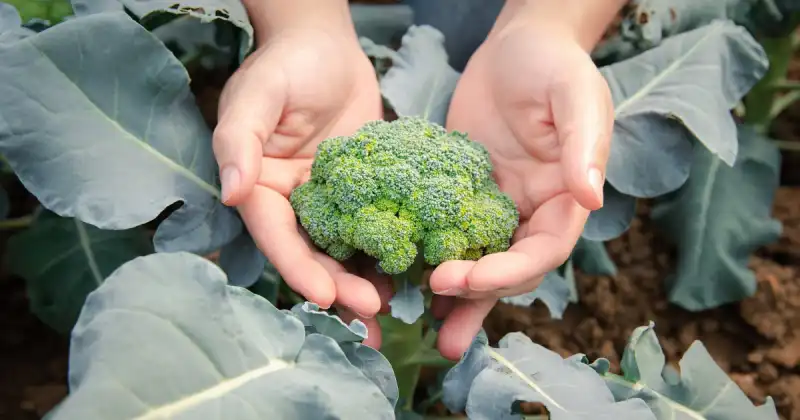
So, whether you are beginning your first successful garden or starting your next, let’s dive deeper into these essential elements to get your vegetable paradise off on the right leaf by growing the fruits and vegetables you deserve.
Humble Highlights
- Save time by knowing the core elements you need to start your garden with the best chance of success to boost your success and discover these 6 exclusive gardening methods.
- Save effort by learning when to start your garden based on your region’s average frost dates and plant hardiness zone so you can confidently grow your grub!
- Discover how to approach gardening with the right attitude, and make it fun so you can get the whole family involved and create timeless memories.
How Do You Grow The Best Vegetable Garden
On average, garden size, type, and ongoing vegetable health determine the success of your green space. However, growing a vegetable garden depends upon several variables. These variables will determine how vigorous your greens become, how abundant your harvests are, and how satisfied you eventually feel throughout each growing season.
Garden Size
Typically, an ideal beginner’s backyard for one person should span 100 square feet, roughly measuring 10 feet by 10 feet. This size provides a great starting point for cultivating self-sufficiency in food production and developing gardening skills, all without overwhelming you.
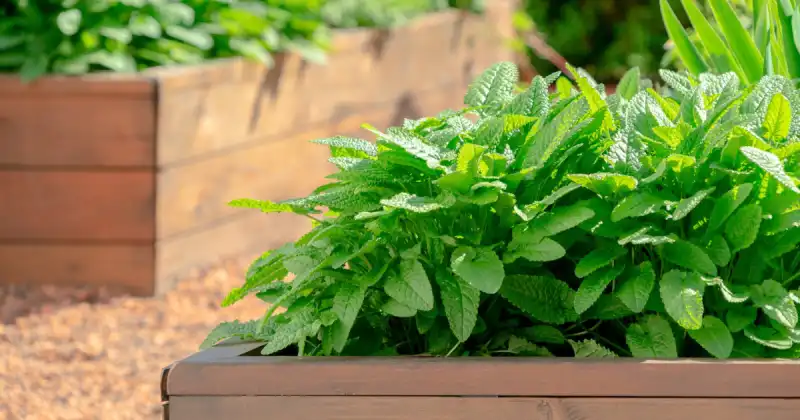
Limit your garden bed width to 3-4 feet (or less for physical ease). Here’s why. You preserve healthy soil when you access your crops without walking atop their fertile ground.
Remember, garden size dictates the time requirements of your new green oasis. How much reasonable time can you devote to growing, caring, and maintaining crops? For your small compact garden, the 100-square-foot example above, you’ll likely spend about an hour per week keeping up with your duties, which most anyone can do. 1
Take some time and think realistically and holistically about what you’re trying to accomplish in your growing space, which will pay off in spades down the line.
Garden size always depends upon your priorities. Don’t think you can’t create a thriving vegetable garden if you have limited space. Yes, I’m looking at you, my green urban brethren. There are many ways to make a garden, so don’t let your perceived lack of available space thwart your well-intentioned plans. The key here is to take the time, schedule ahead, and begin with a small vegetable garden in whatever area you have available.
Garden Plan And Method
Choosing a suitable garden plan and method is influenced by the space available when you begin. While there are various garden types, I’ve outlined six of the most popular ones that gardeners often find enjoyable
And because there are so many gardening methods available, one, or even several, may be just right for you. This easy-to-read chart below gives you a few pros and cons of several popular cultivation practices.
| In-Ground | Raised Bed | Container |
|---|---|---|
| Pro: Grow a variety of crops. Generally less expensive. Can expand at will. | Pro: Soil is loose and better draining. You can plant earlier. More ergonomic and less strain. | Pro: Can grow anywhere. Portable and moveable. Generally less weeds. |
| Con: Space and/or light issues. Generally more weeds and pests. Usually more labor intensive. | Con: More expensive to get started. Dirt will need to be added yearly. Crowded beds can lead to disease. | Con: Size limits quantity. Plants can be root bound. More watering. |
| Hydroponic | Square Food Gardening | Greenhouse |
|---|---|---|
| Pro: Less space required. Fewer pests or disease. Less watering. | Pro: Great for small spaces. Lower maintenance. Higher vegetable yields. | Pro: Can grow year-round. Varieties of vegetables can be grown. Consistent temperature. |
| Con: High cost. Needs electricity. power outages | Con: Only small vegetables. Can be expensive. Lots of watering. | Con: Can be pricey. Critters and pests may set up shop. Constant maintenance and care. |
Start To Plant Your Vegetable Garden
To kick start a vegetable garden requires prudent planning and sound management because all vegetable crops have specific soil and light requirements. For bigger yields, beginners should consider several critical factors, including soil amendments, location, direct source of water, and pest control.

Let’s delve further into some additional core elements to help you keep moving forward on your green oasis’ journey.
Choose A Sunny Spot
Location. Location. Location. Ah, yes, the infamous catchphrase we’ve all heard at one time or another. It holds just as true in the garden.
Whether planting a garden in your backyard, apartment balcony, or patio, it should receive hours of direct sunlight for at least 6 to 8 hours of the day. However, keep in mind that vegetables can be pretty fickle. While these hours can be a minimum amount of light for some vegetable varieties, others, like lettuce, potatoes, and broccoli, to name a few, can get by with much less. With that said, the sun makes the difference between a winning harvest and a failed season.
Also, reading the labels included with your transplants, if you’re buying them at the store or the seed packet if you are directly sowing into the ground, is an effective practice. These labels provide the adequate amount of light needed for your selected choices. 2
Filtered light, like sunlight filtered through a tree canopy, differs from direct light. Your plants will know the difference, and so should you. Check the label for the appropriate light they require when purchasing transplants or sowing seeds.
This video below provides a great review on starting your edible backyard garden. Even if you’re starting from scratch, this resource helps you get started the right way and grow veggies in no time!
Soil Structure
Soil is the engine that runs your green space. Just as your car wouldn’t operate without a finely tuned engine, your garden underperforms without the necessary nutrients. Rich, structured soil with a healthy and thriving ecosystem of beneficial microorganisms will make or break your garden – it is that important.
A functional garden contains soil that makes it easy for crops to absorb water, nutrients, and air. Therefore, your soil should retain moisture yet be well-draining so your roots don’t become waterlogged. You’ll be wise to spend time on your soil preparation and amending your growing medium as a regular part of ongoing maintenance.
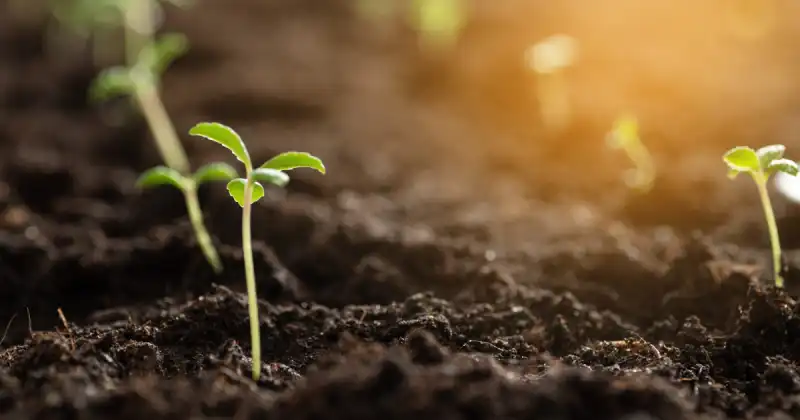
In addition, you need to know what soil conditions currently exist in your yard. However, don’t cross your fingers and hope for the best by guessing. Remember, spending money on amendments that may or may not be necessary when starting a new garden is not advisable.
Instead, check for local companies that provide a comprehensive service to come out and analyze your soil’s makeup. Or, you may purchase a home soil kit to take a few measurements. You’ll then send the samples to a lab that will provide a detailed report of your current soil composition.
Be Water Wise
It is a great idea to place your garden near a water source and a sound practice to water consistently for greater yields. As we all learned in kindergarten, water is the lifeblood of life, and your crops will need a steady supply. Most plants need about 2 to 5 inches of water per week or more if you live in a warmer climate.

If using raised beds with good drainage, you can always use your garden hose and water your vegetable garden heavily once per week to encourage the roots to go deeper into your soil. Not only are you promoting plants to seek out moisture from the ground, but you’ll also teach them some old-fashioned self-sufficiency.
Of course, as with all things in the garden, this time-saving strategy is weather and climate-dependent. So, be mindful of your region’s weather conditions and become a keen observer of your crops for proper hygiene and care.
If you are unsure if your plants are thirsty, one quick and effective way is to push your index finger into the soil. If the soil is dry up to your second knuckle, you know it’s time to provide your crops with a refreshing shower.
The best times to water your budding garden are early mornings and late afternoons. There will be less evaporation, and the soil will retain more moisture than your plants can absorb.
You can also avoid poorly drained soil by using potting mixes or mulch. Or, when you have a container vegetable garden, remember to put holes in your container.Pest And Disease Control
Timely maintenance of your garden keeps unwanted creatures in check before they become a headache. Whether it’s squirrels, moles, or aphids, keeping your garden’s health in check means knowing how to keep those pesky critters at bay.
A healthy green space seeks balance. When you grow vegetables, you inadvertently begin a delicate relationship between your plants and Mother Nature. What could be more beautiful? Cultivating healthy veggies means avoiding destructive pesky insects and diseases in the first place. Of course, this may be easier said than done.
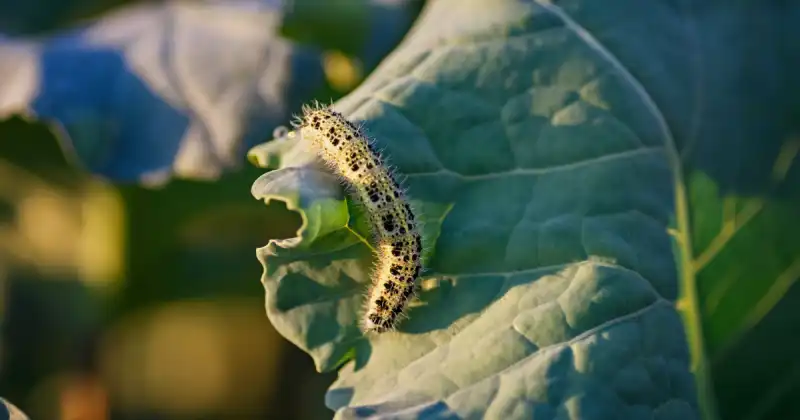
While issues will arise, be proactive and act immediately at the first sign of trouble. Preventing unwanted critters and diseases from cropping up in your vegetable beds is critical. Healthy, well-draining soil, as mentioned above, can help prevent mold and fungus from forming in stagnant, pooling water under the ground. Likewise, ensuring your vegetables are cultivated in a well-lit area of the yard is also beneficial.
Believe it or not, when properly raised and cared for, healthy vegetables can often resolve problems before they escalate, saving you from significant frustration. Remember, early detection means distinguishing between a quick fix and an unmitigated disaster. Don’t let it be the latter.
Don’t Over-Fertilize
Run-of-the-mill fertilizers almost always offer only a short-term boost to your garden. These fertilizers can be laden with harsh chemicals that can burn and kill your crops if you apply them too liberally. They may also carry excess salts that can accumulate within your soil, disrupting your garden’s delicate ecosystem.
Luckily, today’s humble backyard gardener has many improved organic alternatives, although they may not solve all your challenges. A general rule of thumb is to apply less fertilizer to your crops rather than more because it’s preferable to have your veggie babies under-fertilized for the abovementioned reasons.
A preferable option is to structure your soil with natural and organic amendments like aged manure and fresh homemade compost. Not only do these options help the environment by recycling household waste back into your soil, but it’s also the way Mother Nature intended.
Best Days To Grow Vegetables For Beginners
As a general practice, begin your backyard vegetable garden by following the recommended guidelines based on your region’s average last frost date in spring and the average first frost date in fall. These dates will help determine the optimal time when plants grow their best.
Frost Dates
These dates are based on historical climate data for your region and are readily available at local stores or online using your zip code. They provide a single average date, calculated from early and late frost dates, but remember there’s a 50% chance your last freezing date could differ from the listed date.
A great resource that helps you find these dates in your local area is the National Gardener’s Association. You enter your zip code, and out pops all relevant information you can use to start planning your next growing season.
It’s essential to recognize that there are both cool-season and warm-season crops. Frost dates significantly impact warm-season vegetables like tomatoes, peppers, squash, and eggplant. These warm-season crops can be sensitive to freezing temperatures and may not thrive if exposed. 3
With this in mind and to protect the health of your warm-season crops during your spring and fall harvests, it’s standard practice to consider sowing one to two weeks later in spring and one to two weeks earlier in fall.
Know Your Plant Hardiness Zone
Another excellent gardening resource you’ll need when starting is the Plant Hardiness Zone Map distributed by the United States Department of Agriculture. This map separates the United States into 13 geographical cold-hardiness zones. It reflects each region’s average annual minimum temperature and weather conditions, determining what vegetables are likely to thrive in your specific climate.
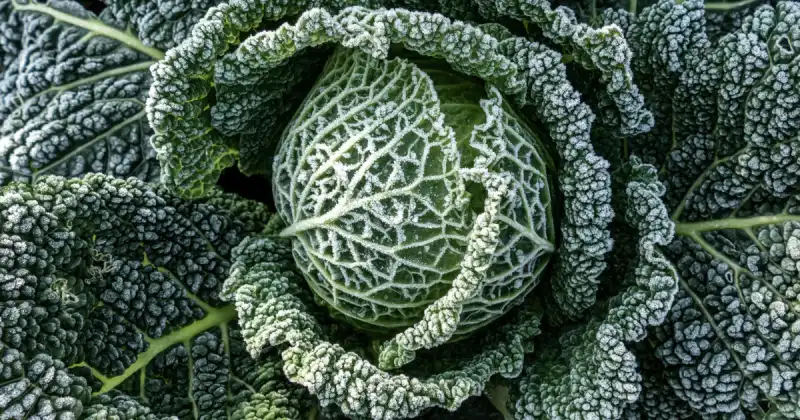
The map shows where crops can survive the winter based on regional average temperatures. You may locate your area on the map and match it with the corresponding color on the right to find your zone.
Should A Garden Be In Full Sun
Most vegetables grow best with six to eight hours of sun. There is a direct relationship between sunlight and the health of your veggies, so when in doubt, be sure your vegetable crops are receiving more, not less, light.
However, just like most life lessons, there are exceptions. Cool-season vegetable plants like carrots, lettuce, radishes, and cabbage, among others, can be grown in partial shade. Sound practice dictates that you should read the informational tag for light requirements when buying seeds or transplants.
These exceptions also apply to your region. For example, if you live in a northern climate with weaker sunlight, your crops appreciate the warmth and energy it provides. In such areas, due to the softer sunlight, they may require more extended periods of photosynthesis throughout the day.
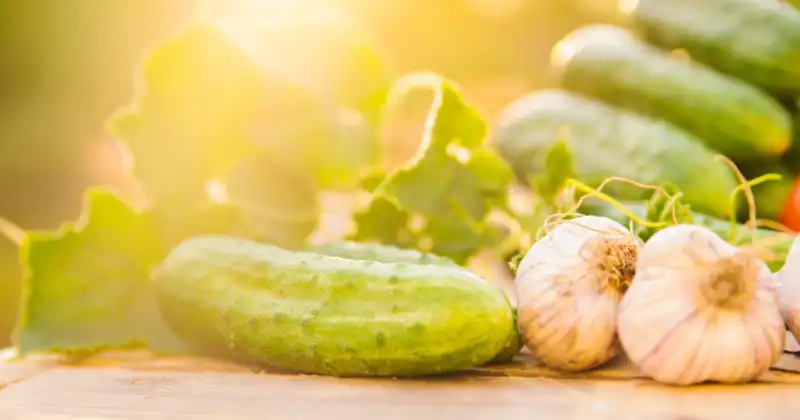
However, if you live in a warmer climate, 6 to 8 hours of sun may damage your plants. Too much light, in this case, can lead to your veggies wilting, developing a bitter taste, and ultimately going to seed before they can produce fruit. Protect them with some much-needed shade covers, or use natural barriers such as buildings or trees by noting where the sun casts shade in your yard. 4
Modern technology can simplify your life if you’re still figuring out how to track the sun. Thank you, science!
Sun Seeker is a fantastic app you can download on your favorite mobile device. The app provides an hourly path the sun takes over a three-dimensional picture of your growing space. As a result, you’ll be in a more advantageous position to determine where your greenery receives optimal sun exposure.
Get into the habit of placing your taller veggies on the northern side of your garden. Then, as the summer rolls on, you ensure vertical trellis vegetables like tomatoes, beans, and corn won’t cast their long shadows on the rest of your budding garden.
Easy-To-Grow Vegetables (Seedlings To Harvest)
Overall, the most efficient vegetables to grow have a hardiness level that is compatible with your garden zone and are native to the temperature found in your region. Some of the fastest and easiest vegetables for beginners include:
- Radishes
- Peas
- Cucumbers
- Kale
- Spinach
- Green beans
- Turnips
- Bok Choy
- Arugula
- Okra
Choosing vegetables that are fast growers and somewhat forgiving of cooler temperatures and soil conditions is one of the time and energy investments you can make in your garden. You’ll be rewarded with delicious veggies, as these crops only need basic care and maintenance.

As a gardener, you can modify and amend many things, such as soil composition, irrigation, and how much light or shade your vegetables receive. The temperature, however, is trickier to adjust. Unless you want to grow something indoors on a windowsill or via an indoor hydroponic system, you won’t be able to magically snap your fingers and change your climate. That’s why growing crops that adapt to your region and temperatures is essential.
Additionally, as previously mentioned, paying attention to your hardiness zone can give you an advantage in selecting some beginner-friendly crops to achieve early gardening success. 5
As you begin, setting realistic expectations for your gardening goals is essential. Remember that you’ll unlikely be able to produce every vegetable in quantities that eliminate the need for your weekly trips to the supermarket.
A great way to start is to choose five vegetables you frequently eat and enjoy the most that grow best in your area and can quickly adapt to your climate zone. Then, focus on these five vegetables throughout the growing season.
Garden Space (A Room To Grow)
One common mistake many new gardeners make is cramming as many seeds or transplants into their newly christened garden as possible. Make sure you avoid this at all costs. Unfortunately, it won’t lead to bigger harvests, but it will increase your chances of encountering diseases and decreasing production.
It’s essential to give your veggies space to grow and spread out. You want your green friends to take advantage of the sunny spot you selected and the nutrient-dense soil they call home. Likewise, you want them to reap all the benefits of the water you provide.
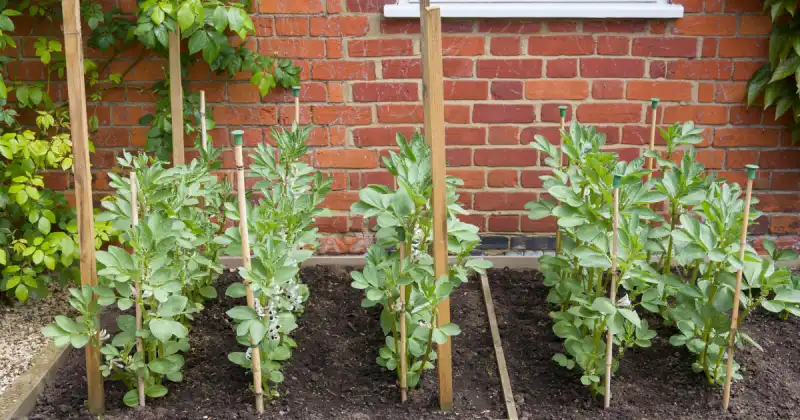
When these ideal garden conditions are not achieved, vegetation competes with each other for light by growing up instead of out. As a result, they become “leggy” because they reach for the sun to avoid being blocked out by their neighbors. Likewise, your roots compete fiercely for nutrient-rich soil and water.
Additionally, the more densely packed your crops are, the less airflow circulates throughout your garden beds. Air circulation is necessary to keep the stalks and leaves dry so mold and fungus are not a problem.
Follow the proper spacing instructions on the seed packets or labels that come with your starts, whether you purchase them from a store or grow them from seeds.
Patience Is A Virtue And Learning Is Fun
Taking things one step at a time is essential when you embark on your gardening journey. You may be highly motivated, but it’s important not to rush in and create too much green space that it becomes too demanding.
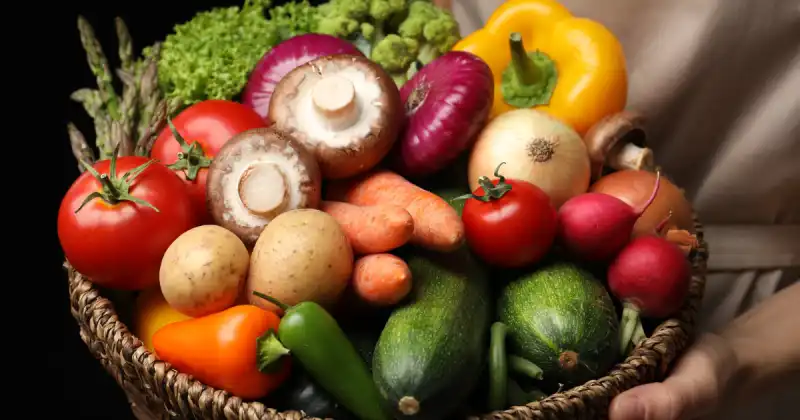
Instead, take things slowly. Begin with a small garden and then gradually expand it. This way, you give yourself more time to learn the craft and thoroughly savor the experience of growing your food and all the freedoms that come with it.
Be realistic with your new gardening endeavors. As experienced growers will attest, gardening is a humbling practice. Yes, mistakes are bound to happen. But this is all part of the learning curve we all must endure. 6
Instead, I challenge you to take on a different perspective. Look at any shortcomings as opportunities to learn and improve. Use each “mistake” as a teaching tool to keep advancing. Above all, have a strong sense of humor. The more comfortable you become growing your food, doggone it, you are on your way. Begin to scale your operation by expanding your garden until your heart’s content. That, in itself, is its own reward, which should excite you!
A general rule of thumb is to think of each growing season like pages in a book. As you learn more about the plot and characters with each passing chapter, the same applies to gardening. Every passing season allows you the opportunity to discover new things. Each vegetable seed you sow, and every pest you thwart is another feather in your cap toward your ever-increasing gardening prowess.
Conclusion
Give yourself a friendly pat on the back! You’re about to embark on a fantastic journey.
Even if you are entirely new, growing the best and bountiful vegetable garden is achievable and becomes less complicated with the more planning you do beforehand. Along with a little organization and a healthy dose of self-confidence, you are setting yourself up for success.
Remember, getting the most productivity out of your vegetable garden means being mindful of many little things. For example, providing adequate sunlight to your crops, amending soil structure, and general garden maintenance are crucial elements that will help you along the way. Following this guide gives you an essential roadmap to understanding the gardening basics of success.
What are your favorite vegetables to grow? We’d love to know what nutritious favorites are on your shortlist! Comment below and join in on the conversation!
SOURCES
- University Of New Hampshire, Extension – Preparing A Vegetable Garden Site
- North Carolina State University, Extension – 16. Vegetable Gardening
- University Of Maryland, Extension – How To Start A Vegetable Garden
- United States Department Of Agriculture – Vegetable Gardening
- ScienceDirect – Gardening Is Beneficial For Health: A Meta-Analysis
- The National Gardening Association – Growing Vegetables Gardening Guide For Beginners

